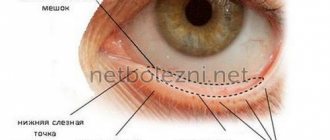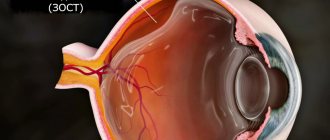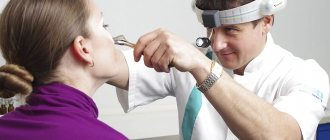Eye twitching? This is very unpleasant. Unintentional movements of the eyelids, repeated every few seconds, cannot but irritate, and it is not always possible to cope with them with a simple effort of will. According to ophthalmologists, the nervous tic itself is harmless to vision. But:
- firstly, it causes discomfort;
- secondly, it indicates that not everything is okay with you.
Find the nearest optical salon
Why does the upper or lower eyelid twitch? It is extremely important to answer this question. After all, if you find the cause of the phenomenon, it will be easier to understand how to deal with it.
What it is?
Eye tic in neurology is when both eyelids contract or the muscles of both eyes contract strongly. This name is often confused with myokymia of the eyelid - involuntary contraction of the upper or lower eyelid (orbicularis oculi muscle). Both syndromes are hyperkinesis. That is, temporary or permanent contraction of fibers in the muscles. Myokymia is characterized by painlessness, lower amplitude, and frequency of twitching. It is rarely associated with the appearance of serious diseases and often accompanies overwork and stress.
Solving psychological problems
Psychological trauma may explain why the eye twitches. What to do in this case? It is worth noting that drugs in this case will be powerless. If some situation does not give a person peace, he has experienced psychological trauma and cannot overcome its consequences himself, he needs to consult a psychologist. In this case, only the right therapy will help remove the cause of the nervous breakdown. You need to think positively. This gives inner peace.
Having considered why the eye twitches and what to do in such a situation, you can quickly get rid of not only the unpleasant symptom, but also the main reason that provoked its appearance.
How does this happen?
Due to vigorous activity near computers or phones, books, which requires the work of the facial muscles of the eyes, forehead and face as a whole, the eyes become very tired. This happens to such an extent that the neurotransmitters responsible for muscle function cease to be synthesized correctly. That is, chemicals do not transmit impulses from neurons to muscle tissue. The eyelid begins to twitch. Disruption of neurotransmitters is associated with stress and fatigue, and people often notice this. If the day turns out to be unpleasant, then the eye will definitely begin to twitch. Myokymia can be caused by some antipsychotics and nervous system stimulants in combination with difficult life events.
First aid
If your eye twitches a lot during the day, you need to do a number of exercises that will help relieve excess muscle tension. This will ease the condition by reducing the number of contractions. You can do relaxation exercises right at work. To do this, you only need to spend a few minutes of your time.
First, you should sit up straight or get up from your chair. You need to close your eyes and then take a deep breath. The eyes remain closed. This is followed by a slow exhalation. In this case, you should try to relax the muscles around the eyes as much as possible. Next, take a few more inhalations and exhalations.
After this, you need to close your eyes tightly and then open your eyes wide. After this exercise, the unpleasant symptom should go away. This procedure may be needed in an emergency, for example, before a photo shoot or an important meeting, interview, etc.
It is worth considering that such an exercise is effective, but only for a while. If the spasm appears again, you need to look for the cause of its occurrence. Only by eliminating the unfavorable factor can the problem be solved.
When should you worry?
You should not worry if myokymia, a nervous tic of the eye, is not accompanied by other symptoms. Its very rare occurrence, or its occurrence for several days in a row, although no diseases are detected, can be considered the norm. Sometimes this can last for several years. In this case, the body requires unloading. You need to listen to him carefully and change your daily routine. Spend time outdoors, engage in quiet, relaxing activities, and take your mind off the daily hustle and bustle. But if myokymia appears along with poor health or fever, soreness, movements of other parts of the face, this may indicate a malfunction of the thyroid gland, lack of vitamins, multiple sclerosis and encephalitis. You need to be examined by a neurologist, ophthalmologist and psychologist.
causes and symptoms of eyelid twitching
Types of spasms
If the eye constantly twitches, in most cases a doctor's consultation is required. He will determine what type of pathology it is, determine the causes and prescribe the correct treatment. There are three main types of eye twitching:
- Spasms of the small eyelid.
- Hemifacial type of twitching.
- Essential benign blephospasm.
Many people are familiar with the feeling of an eye twitching for several days. What to do in such a situation? Most often, the cause of this phenomenon is stress, improper reading regimen, unbalanced diet, etc. This leads to a spasm of the small eyelid.
This type of twitching is usually harmless. It is not accompanied by painful sensations. When the unfavorable factor is eliminated, the twitching goes away within a few days or weeks.
The situation is much more complicated if a person’s twitching causes benign blepharospasm. Most often, this disease develops in middle age. Gradually it progresses. Moreover, the disease is diagnosed in women much more often than in men. The pathology begins with frequent blinking. Eye irritation is constantly felt. This is caused by fatigue, external irritants (for example, low-quality cosmetics), as well as stress.
When essential blepharospasm begins to progress, a person develops increased sensitivity to bright light, wind, and polluted air. Vision becomes blurry. Sometimes facial muscle spasms may occur. In some cases, the muscles become so tense that the person cannot open their eyes for several hours. It is a neurological disorder caused by several adverse factors.
Hemifacial spasm is diagnosed much less frequently. In this case, not only eye twitching appears. The tic also affects the muscles around the mouth. Spasms in this case are observed only on one side of the face. This pathology is caused by pressure from the arteries on the nerves of the facial muscles.
Possible reasons
Most often, a “nervous tic” of the eyelid causes:
- diseases of the nervous system that are inherited,
- lack of sleep - muscles do not have time to recover, which leads to their overstrain,
- overwork as a result of lack of sleep or hard work,
- stress (situations that require an immediate solution, leaving the comfort zone increases the level of adrenaline, and the muscles involuntarily contract,
- alcohol abuse, which can cause muscle spasms and interfere with the interaction of fibers and neurons,
- abuse of energy drinks, coffee, tea, chocolate - muscles quickly react to any irritants.
Why does a child's eye twitch?
Nervous tics are observed much less often in girls than in boys. The predominant age for the onset of tics in children is 3-11 years. In a child, eye spasms in 90% of cases are primary in nature, and they develop against the background of:
- family conflicts;
- overload at school;
- stress, especially prolonged stress.
With careful attention to the baby and the prevention of quarrels, conflicts and stressful situations, psychosomatic tics in children quickly pass. Unfortunately, sometimes the causes of eyelid pulsation are more complex. For example, damage to the nervous system can occur after suffering from inflammatory diseases - meningitis, encephalitis, severe influenza. In childhood, tics are sometimes caused by attention deficit hyperactivity disorder, as well as the following pathologies:
Advertising:
- eczema, dermatitis with severe itching;
- parasitosis;
- inflammatory eye diseases;
- head injuries;
- Tourette's syndrome.
Prevention and treatment
Knowing the reasons, it will be easier to cope with a twitching eyelid and prevent the situation from worsening. Here are some simple options:
- give the body the right amount of time to rest and recover, organize sleep correctly,
- drink less caffeinated drinks, it is better to replace them with water,
- try not to create or enter into stressful situations, but treat everything calmly and judiciously,
- do gymnastics for the eyes,
- give your eyes a rest between activities,
- do not drink alcohol,
- properly organize the workplace, adjust the light and ventilate the room.
treatment of myokymia
In some cases, these simple steps will be enough to get rid of the problem. But if this does not bring any results, you need to consult a doctor. Together with him, undergo examinations of the nervous system, vision, and internal organs, after which he will select the appropriate treatment (medicines, lifestyle adjustments, lenses, glasses). You should contact a specialist in any case, as self-medication can worsen the situation.
Compresses
In addition to the above actions, you need to apply compresses every day if your eye constantly twitches. This is an effective remedy for relaxing the muscles around the eyes. You need to apply cotton swabs soaked in ice water to your eyelids. This recipe is applicable only if there are no traces of conjunctivitis or inflammatory processes in the eyes.
Tea lotions are safer. Refrigerated brew will be required. It can be either black or green tea, preferably without artificial flavors. The tea leaves are wrapped in gauze and left in the refrigerator. When it cools down, the tea leaves are applied to the eyelids. The procedure lasts 10 minutes.
You can also make lotions from anise. Its seeds are poured with boiling water and left for 1 hour. Then the steamed grains are applied to the eyelids for 10-15 minutes. The decoction can be drunk instead of tea with honey. This calms the nervous system.
Symptoms of nystagmus
Nystagmus is characterized by movements of the eyeball that occur spontaneously or after some provocation. Movements are pendulum-like (back and forth) and last the same amount of time in the horizontal and vertical planes or diagonally. If the eye moves faster in one direction than in the other, then such nystagmus is defined as jerky.
There is also a mixed type, in which when a person looks forward, pendulum-like movements occur, but when looking in any direction, jerky movements occur.
Types of nystagmus
According to the direction of oscillatory eye movements, the disease is divided into:
- Vertical nystagmus, if the eye moves up and down (vertically);
- Horizontal nystagmus, when movements occur along a horizontal axis;
- Rotatory nystagmus, with rotational movements around the sagittal axis;
- Convergent nystagmus, in which there is rapid movement of the eyes towards each other;
- Diagonal nystagmus - movement along a diagonal.
The direction in which the nystagmus is directed must be judged by its rapid phase.
If the eye movements are of the same type, the nystagmus is called associated, if different - dissociated.
Nystagmus is also distinguished by the location of the lesion:
1. Vestibular. Its causes are due to pathologies of the part of the brain that receives information from the vestibular apparatus, as well as a disease of the labyrinth itself (peripheral vestibular apparatus). Such nystagmus can be caused by rotation of the body, as well as a caloric test (pour cold or warm water of a certain temperature into the ear). It can also occur spontaneously, accompanied by nausea and dizziness. 2. Central. Such nystagmus develops with traumatic, dystrophic, tumor or inflammatory lesions of the cerebellum, structures in the posterior cranial fossa, subcortical and cortical centers for the regulation of eye movements.
There are also other classifications.
Nervous tics can be caused by:
- Psychological fatigue or sudden shock, frequent stress, neurosis.
- Eye fatigue and eye diseases that affect the nerve endings.
- Trigeminal neuralgia and other neurological diseases.
- Infections, intoxication of the body (especially typical for children whose immunity is not yet strong).
- Parasites, helminthic infestations.
- Disturbance of metabolic processes in the body.
- Vitamin deficiency, which causes muscle cramps and spasms.
- Alcohol and drug abuse.
- There are also hypotheses about a hereditary tendency to tics.











